10 Ways to Give a Better Lecture
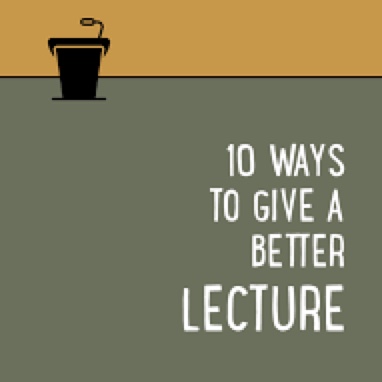
Mostly due to overuse and poor execution, lecturing has come to be frowned upon in modern teaching. However, if done well, a lecture can be an extremely effective tool. Here’s how to make your lectures better.
#oneword2022

What is your ONE WORD for 2022? This creative assigment is a great way to have students reflect on their goals, ambitions, dreams, hopes and/or aspirations for 2022.
Make it Stick
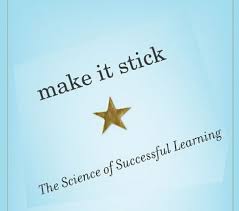
Procrastinate – Cram – Test – Forget. This is how most kids get through school. They may pass the class, but they don’t necessarily learn the material, much less remember it for any length of time. What if we could design our instruction so that the learning really stuck, so they remembered our content for years rather than just for long enough to pass the test? There is a way and it’s so simple. In this resource, you will learn how working memory and long-term memory function and how you can use the strategies of retrieval practice, spacing, interleaving, and feedback to help kids retain the content you are working so hard to teach.
Make It Stick: 4 Powerful Teaching Strategies Based on the Science of Learning
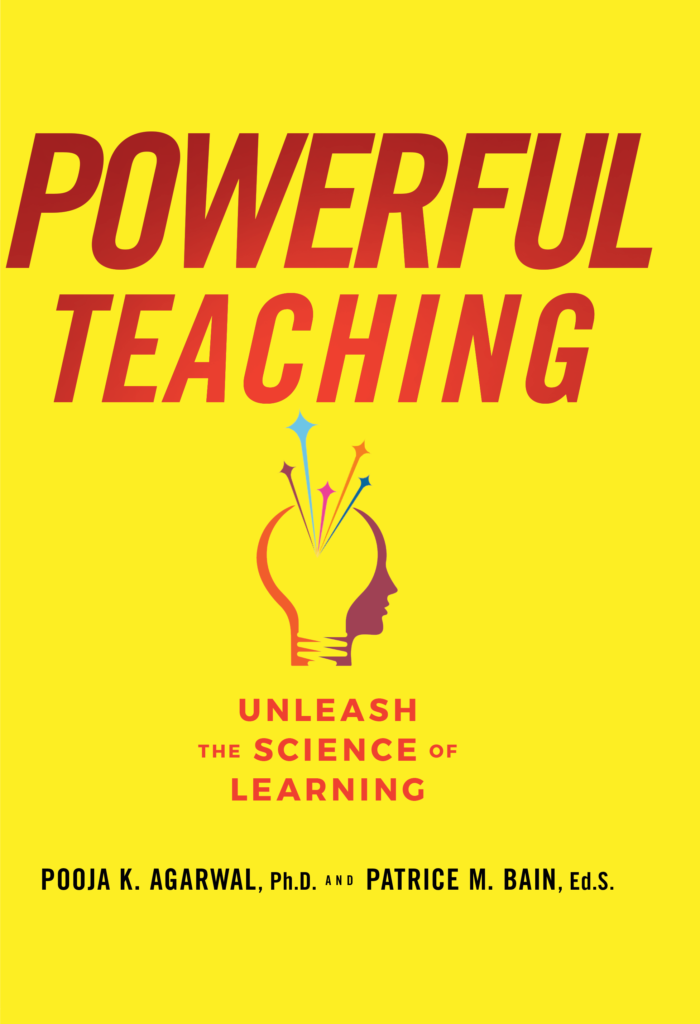
Over the past few decades, cognitive scientists have been trying to pinpoint exactly which activities work best for storing concepts in long-term memory. Until now we haven’t gone very deep into what these strategies look like in the classroom…
Is That Higher-Order Task Really Higher-Order?
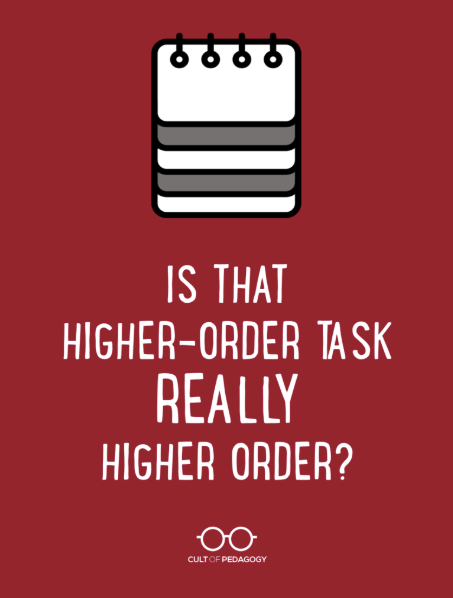
It’s kind of a given that most teachers want their students to be doing rigorous, challenging work. Ask any teacher, “Is it your goal to simply have students regurgitate facts in your class?” and every time, the answer will probably be no. And yet, that exact thing is happening more often than we realize. It’s not for lack of trying: For years, teachers have consulted their Bloom’s flip charts and DOK wheels to choose the verbs that are meant to represent higher levels of thinking. In a lot of cases, though, while the right verbs are being used, the tasks they represent aren’t actually on the level teachers think they are.
Wicked Problems & Impossible Projects: 33 Questions at DOK Level 4
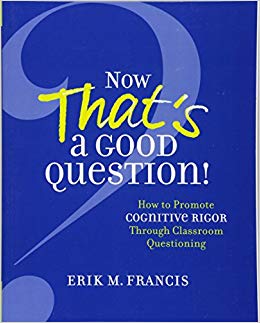
Wicked problems and impossible projects are complicated by nature because of the many components, factors, individuals, and resources affected and involved. They promote cognitive rigor by providing students with the opportunity to demonstrate and communicate their knowledge and thinking at the highest level of Bloom’s taxonomy (analyze, evaluate, create) and deepest levels of Webb’s models (strategic and extended thinking). Here are examples of good questions our students can respond to using the deeper knowledge and thinking they have acquired and developed.
DOK Ceilings
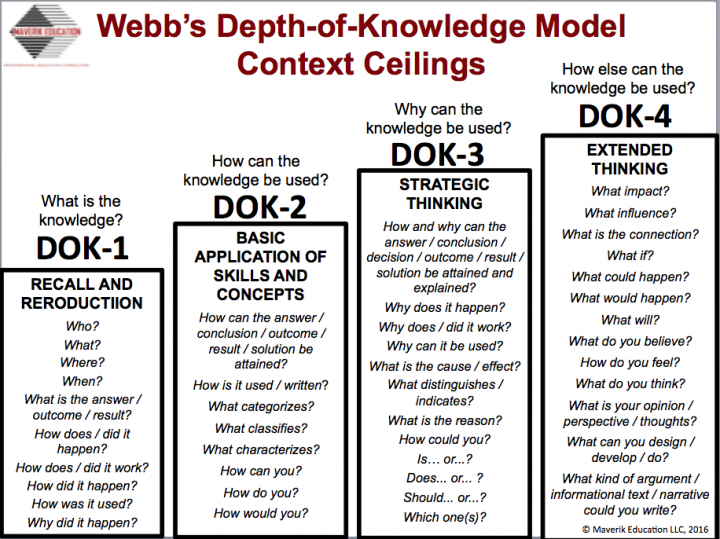
This visual, designed by Erik Francis of Maverick Education, is intended for teachers to use to plan and provide their instruction and assessment, and also for administrators to use as a guide for observing and evaluating teacher instruction and effectiveness. It is an attempt at a graphic representation that not only embodies Webb’s concept of depth of knowledge but also how Hess, Carlock, Jones, and Walkup explain how the Webb’s DOK model superimposes with Bloom’s Revised Taxonomy in their Cognitive Rigor Matrix.
DOK is NOT a Wheel!
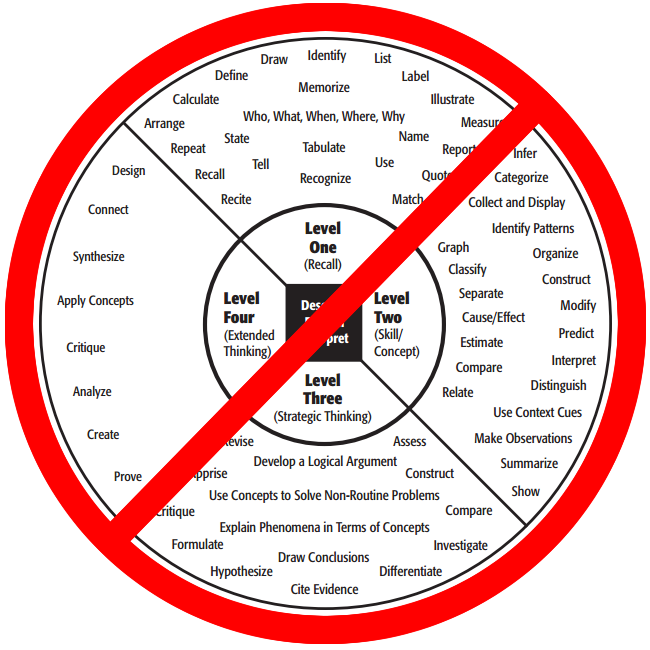
Depth of Knowledge. It’s a concept we in education have heard a lot about since our states transitioned to college and career ready standards – be it the Common Core State Standards, the Next Generation Science Standards, or whatever each individual state has decided to call their academic standards that promote college and career readiness.
It’s also one of the most misinterpreted and misrepresented concepts in education that is not only confusing but also frustrating us educators. Most of it is due to the infamous DOK Wheel.
What Does DOK Level 4 Look Like?
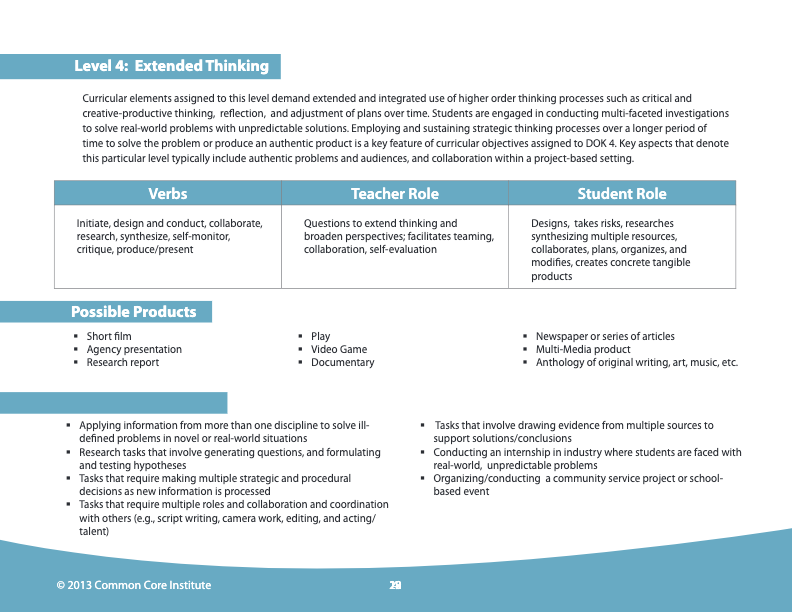
Curricular elements assigned to this level demand extended and integrated use of higher order thinking processes such as critical and creative-productive thinking, reflection, and adjustment of plans over time. Students are engaged in conducting multi-faceted investigations to solve real-world problems with unpredictable solutions. Employing and sustaining strategic thinking processes over a longer period of time to solve the problem or produce an authentic product is a key feature of curricular objectives assigned to DOK 4. Key aspects that denote this particular level typically include authentic problems and audiences, and collaboration within a project-based setting.
What Does DOK Level 3 Look Like?
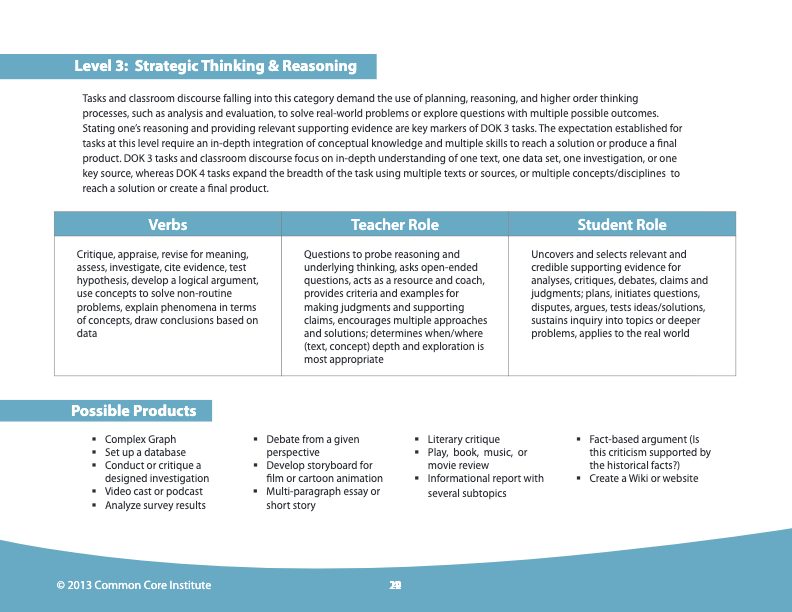
Tasks and classroom discourse falling into this category demand the use of planning, reasoning, and higher order thinking
processes, such as analysis and = evaluation, to solve real-world problems or explore questions with multiple possible outcomes. Stating one’s reasoning and providing relevant supporting evidence are key markers of DOK 3 tasks. The expectation established for tasks at this level require an in-depth integration of conceptual knowledge and multiple skills to reach a solution or produce a final product. DOK 3 tasks and classroom discourse focus on in-depth understanding of one text, one data set, one investigation, or one key source, whereas DOK 4 tasks expand the breadth of the task using multiple texts or sources, or multiple concepts/disciplines to reach a solution or create a final product.
What Does DOK Level 2 Look Like?
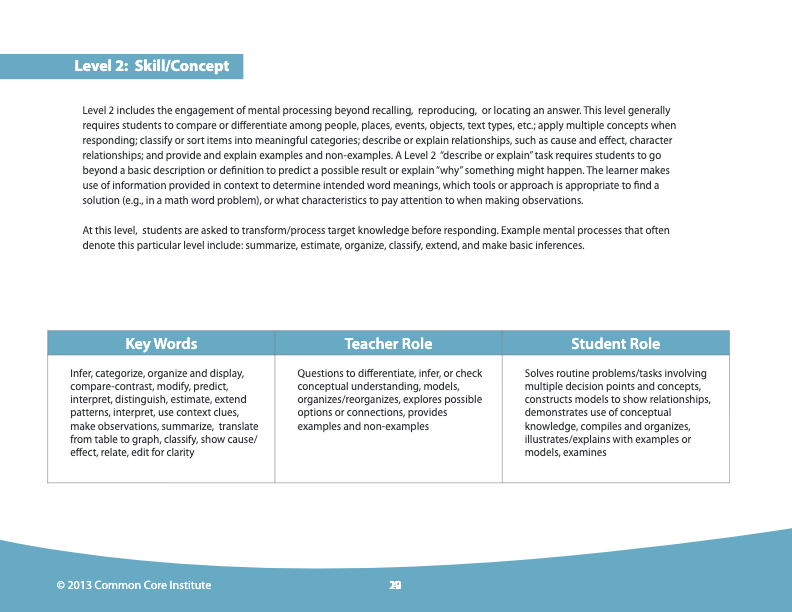
Level 2 includes the engagement of mental processing beyond recalling, reproducing, or locating an answer. This level generally requires students to compare or differentiate among people, places, events, objects, text types, etc.; apply multiple concepts when responding; classify or sort items into meaningful categories; describe or explain relationships, such as cause and effect, character relationships; and provide and explain examples and non-examples. A Level 2 “describe or explain” task requires students to go beyond a basic description or definition to predict a possible result or explain “why” something might happen. The learner makes use of information provided in context to determine intended word meanings, which tools or approach is appropriate to find a solution (e.g., in a math word problem), or what characteristics to pay attention to when making observations.
What Does DOK Level 1 Look Like?
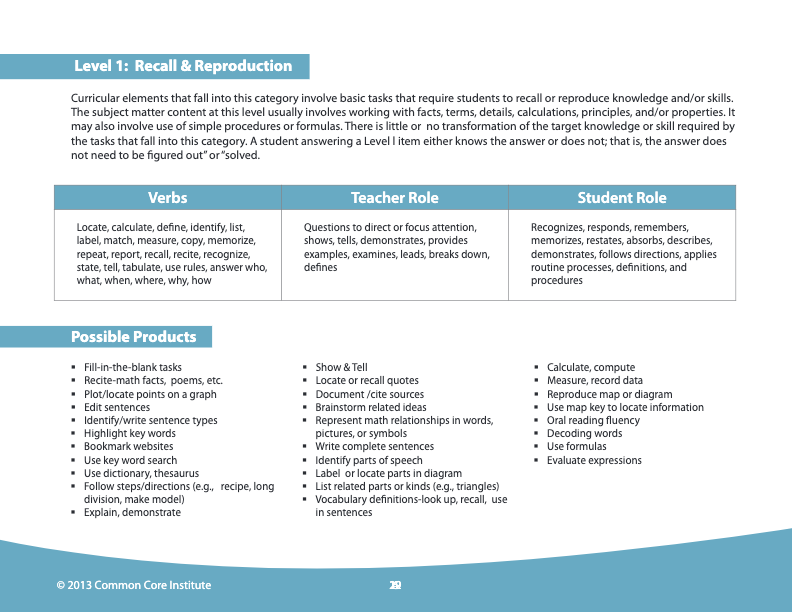
Curricular elements that fall into this category involve basic tasks that require students to recall or reproduce knowledge and/or skills. The subject matter content at this level usually involves working with facts, terms, details, calculations, principles, and/or properties. It may also involve use of simple procedures or formulas. There is little or no transformation of the target knowledge or skill required by the tasks that fall into this category. A student answering a Level l item either knows the answer or does not; that is, the answer does not need to be figured out” or “solved.
History of Higher Order Thinking Tools
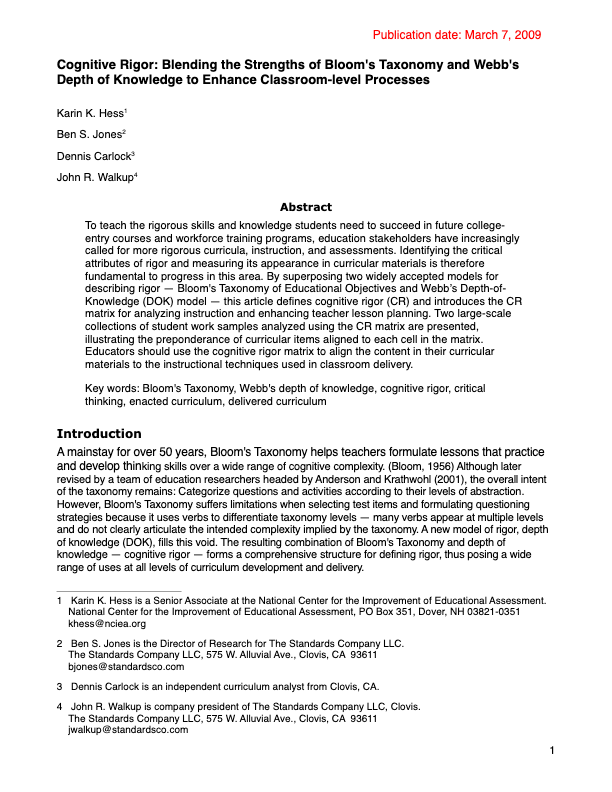
Cognitive Rigor: Blending the Strengths of Bloom’s Taxonomy and Webb’s Depth of Knowledge to Enhance Classroom-level Processes
Hess Cognitive Rigor Matrix (Classroom Walk-Through Tool)
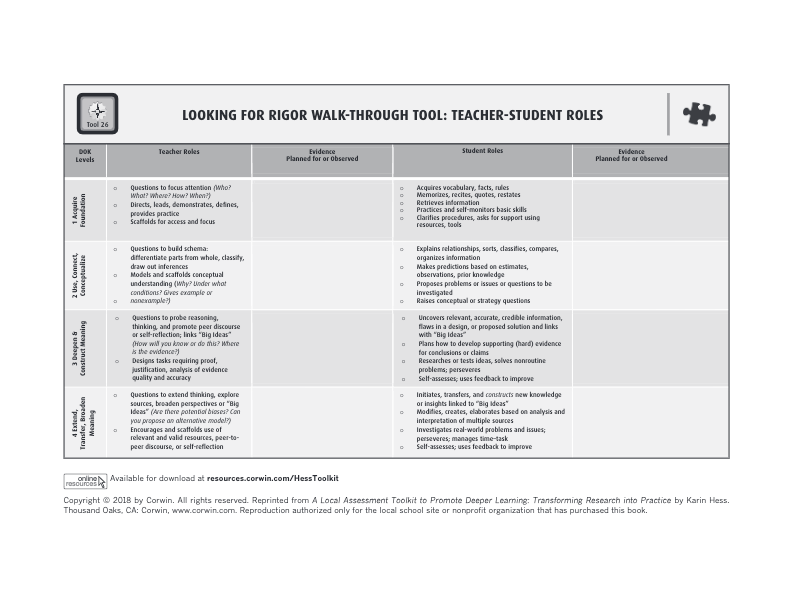
Looking for rigot walk-through tool: teacher and student roles.
Hess Cognitive Rigor Matrix (CTE)
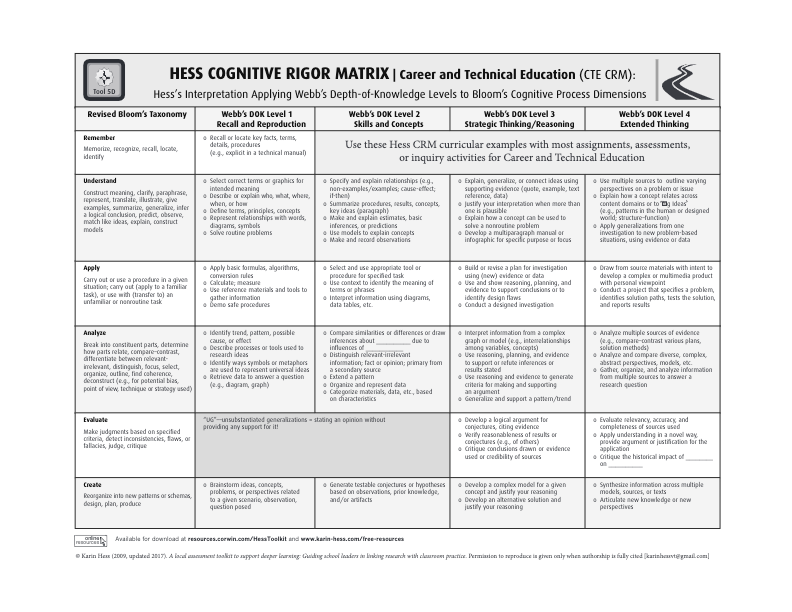
Hess’s Interpretation Applying Webb’s Depth-of-Knowledge Levels to Bloom’s Cognitive Process Dimensions in Career and Technical Education
Hess Cognitive Rigor Matrix (World Language)
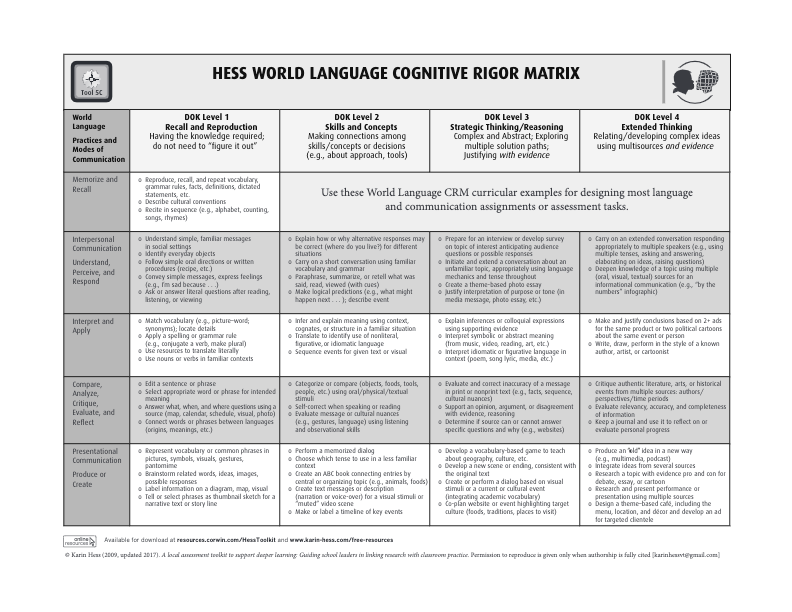
Applying Webb’s Depth-of-Knowledge Levels to Bloom’s Cognitive Process Dimensions in World Language
Hess Cognitive Rigor Matrix (Health/PE)

Applying (Hess’s Interpretation of) Depth of Knowledge to Porter’s Cognitive Demand Categories in Health and Physical Education
Hess Cognitive Rigor Matrix (Fine Arts)

Applying (Hess’ Interpretation of) Webb’s Depth-of-Knowledge Levels to Artistic Practices
Hess Cognitive Rigor Matrix (Social Studies)

Applying Webb’s Depth-of-Knowledge Levels to Bloom’s Cognitive Process Dimensions in Social Studies
Hess Cognitive Rigor Matrix (Writing/Speaking)

Applying Webb’s Depth-of-Knowledge Levels to Bloom’s Cognitive Process Dimensions in Writing/Speaking
